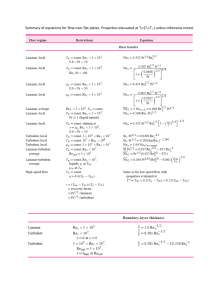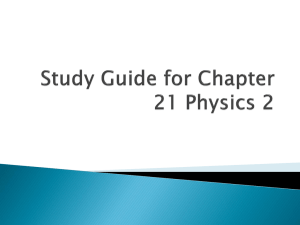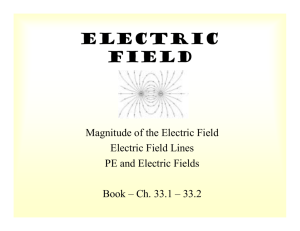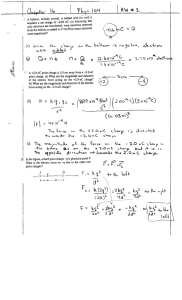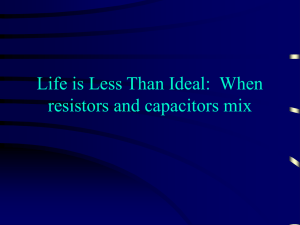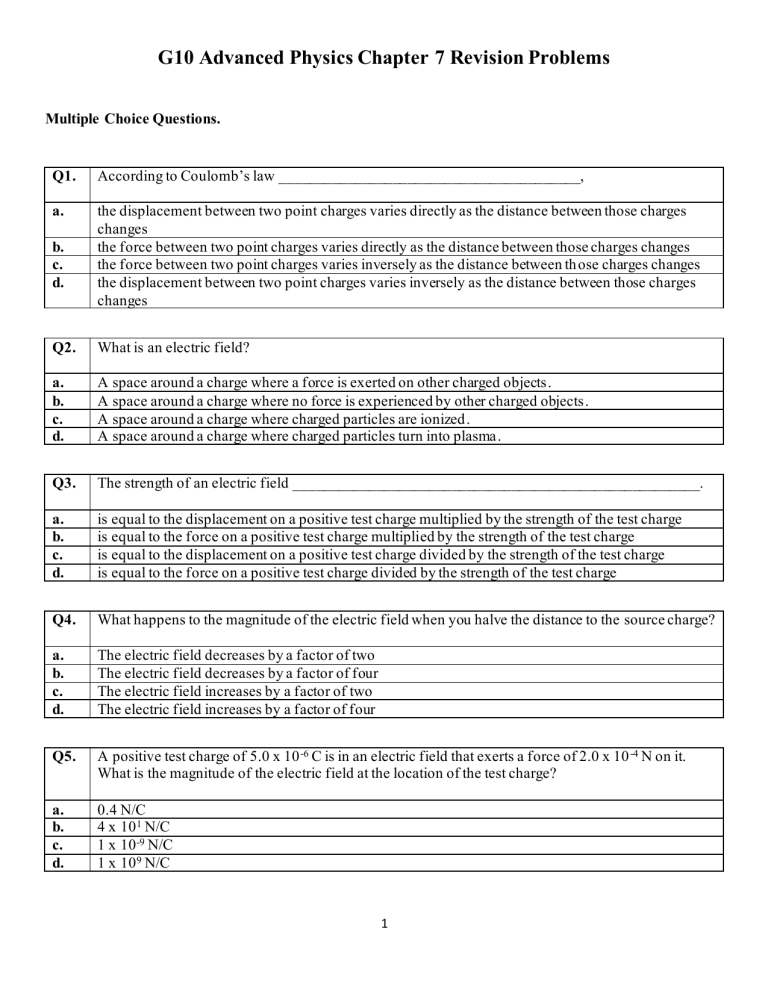
G10 Advanced Physics Chapter 7 Revision Problems Multiple Choice Questions. Q1. According to Coulomb’s law ________________________________________, a. the displacement between two point charges varies directly as the distance between those charges changes the force between two point charges varies directly as the distance between those charges changes the force between two point charges varies inversely as the distance between th ose charges changes the displacement between two point charges varies inversely as the distance between those charges changes b. c. d. Q2. What is an electric field? a. b. c. d. A space around a charge where a force is exerted on other charged objects. A space around a charge where no force is experienced by other charged objects. A space around a charge where charged particles are ionized. A space around a charge where charged particles turn into plasma. Q3. The strength of an electric field ______________________________________________________. a. b. c. d. is equal to the displacement on a positive test charge multiplied by the strength of the test charge is equal to the force on a positive test charge multiplied by the strength of the test charge is equal to the displacement on a positive test charge divided by the strength of the test charge is equal to the force on a positive test charge divided by the strength of the test charge Q4. What happens to the magnitude of the electric field when you halve the distance to the source charge? a. b. c. d. The electric field decreases by a factor of two The electric field decreases by a factor of four The electric field increases by a factor of two The electric field increases by a factor of four Q5. A positive test charge of 5.0 x 10 -6 C is in an electric field that exerts a force of 2.0 x 10 -4 N on it. What is the magnitude of the electric field at the location of the test charge? a. b. c. d. 0.4 N/C 4 x 10 1 N/C 1 x 10 -9 N/C 1 x 10 9 N/C 1 Q6. What is the magnitude of the electric field at a position that is 1.2 m from a 4.2 x 10 -6 C point charge? Note: k = 9.0 x 10 9 N.m2/C2 a. b. c. d. 2.6 x 10 4 N/C 2.6 x 10 -4 N/C 3.5 x 10 4 N/C 3.5 x 10 -4 N/C Q7. How can you tell which charges are positive and which are negative by examining the field lines? a. The arrows around a positive charge point away from the charge; the arrows around a negative charge point toward the charge. The arrows around a positive and negative charge point away from the charges. The arrows around a positive charge point away from the charge; the arrows around a negative charge point toward the charge. The arrows around a positive and negative charge point towards the charges. b. c. d. Q8. Complete the following statement: “A positive test charge is placed within the electric field of a negative charge. If you …………….” a. b. c. d. move the positive test charge away, you will have to exert a force. move the positive test charge away, you will have to exert no force. move the positive test charge away, you will get a larger charge. move the positive test charge away, you will get a stronger field. Q9. Electric potential difference is __________________________________________________. a. b. c. d. the ratio of the work needed to move a charge to the magnitude of that charge the ratio of the force needed to move a charge to the magnitude of that charge the ratio of the displacement needed to move a charge to the magnitude of that charge the ratio of the field needed to move a charge to the magnitude of that charge Q10. What will happen if you move a test charge in a circle around a negative charge? a. b. c. d. It creates a negative and positive electric potential difference. It creates a negative electric potential difference. It creates a positive electric potential difference. It creates a zero electric potential difference. Q11. How can a uniform electric field be produced? a. b. c. d. Place two large, flat conducting plates perpendicular to each other. Place two large, round conducting plates parallel to each other. Place three large, flat conducting plates parallel to each other. Place two large, flat conducting plates parallel to each other. 2 Q12. What electric potential difference is there between two metal plates that are 0.20 m apart if the electric field between those plates is 2.5 x 10 3 N/C? a. b. c. d. 5 x 10 1 V 5 x 10 2 V 2 x 10 1 V 2 x 10 2 V Q13. How do manufacturers construct capacitors? a. b. c. d. By placing two conducting plates separated by an insulator. By placing two conducting plates separated by a conductor. By placing two insulating plates separated by an insulator. By placing two insulating plates separated by an conductor. Q14. In which of the following are capacitors used? a. b. c. d. Filament bulbs A computer A wind up watch An electric fan Q15. Name the unit that capacitance measured in. a. b. c. d. Coulombs Farads Amperes Volts 3 Constructed Response Questions. Q1 An oil drop suspended motionless between two 30 cm square parallel plates weighs 1.5×10 -14 N. The parallel plates are 2.4 cm apart, and the potential difference between them is 450 V. a. What is the charge on the oil drop? b. If the upper plate is positive, how many excess electrons are on the oil drop? List the stages involved in the reflex arc. Q2 Lightning has the potential of causing severe damage to buildings. a. What protection mechanism do builders use to protect buildings from lightning? . b. How does the mechanism in part (a) help protect the building? 4

